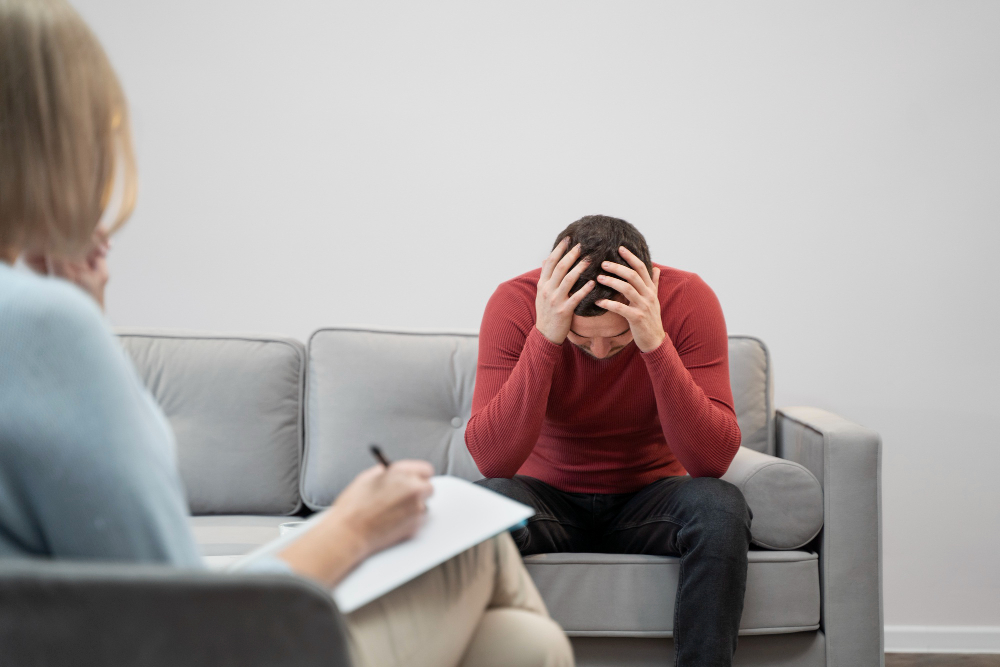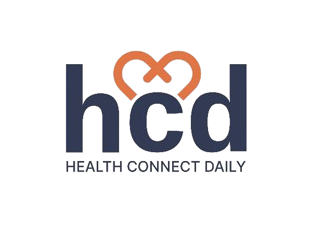
Understanding the differences between ADD and ADHD has never been more important. With rising awareness around attention disorders, many individuals and families are searching for accurate, up-to-date, and practical information. Whether you’re navigating your own symptoms or supporting a loved one, this guide from Health Connect Daily will help you unravel the key distinctions between ADD and ADHD, delve into their respective symptoms, and highlight the most effective ADHD treatment strategies available today.
ADHD vs ADD: What’s the Difference?
Let’s clear up a common misconception right away: ADD (Attention Deficit Disorder) is an outdated term. Today, all forms of attention-related conditions fall under the umbrella of ADHD (Attention-Deficit/Hyperactivity Disorder). However, the term “ADD” is still widely used informally, especially when referring to individuals who exhibit symptoms of inattention without the hyperactivity component.
In essence:
- ADD is now considered an outdated term that typically referred to ADHD without hyperactivity.
- ADHD includes three main presentations: inattentive, hyperactive-impulsive, and combined.
Understanding these presentations is crucial for getting an accurate ADHD diagnosis and finding the right support or ADHD treatment plan.
The inattentive type (previously called ADD) is characterized by symptoms such as forgetfulness, difficulty sustaining attention, and frequent careless mistakes. People with this form may not show disruptive hyperactive behavior but still struggle significantly in academic, professional, or personal areas. The hyperactive-impulsive type involves constant motion, difficulty waiting turns, and interrupting others. The combined type displays both inattentiveness and hyperactivity-impulsivity, and is the most common presentation.
ADHD Symptoms in Children and Adults
Common Symptoms of ADHD:
- Difficulty focusing or sustaining attention
- Forgetfulness in daily activities
- Disorganization
- Fidgeting or restlessness
- Impulsivity or acting without thinking
- Difficulty following through on tasks
- Frequently losing items like keys or phones
- Struggling with time blindness or unrealistic estimations of time needed
These symptoms may appear differently depending on age and individual personality traits. That’s why it’s important to recognize that ADHD symptoms manifest uniquely in adults versus children.
Signs of ADHD in Adults:
Many adults with ADHD go undiagnosed until much later in life. That’s partly because symptoms like impulsivity or disorganization are often mistaken for personality quirks. However, these traits can significantly affect daily life and mental health.
Common signs of ADHD in adults include:
- Chronic procrastination
- Poor time management
- Frequent job changes
- Trouble maintaining relationships
- Forgetting appointments or deadlines
- Feeling overwhelmed by everyday tasks
- Difficulty relaxing or feeling internally restless
- Struggles with prioritization and decision-making
Undiagnosed adult ADHD can lead to complications such as anxiety, depression, low self-esteem, and difficulties maintaining employment or relationships. It is vital to seek a formal diagnosis if these challenges are recurring.
Getting an ADHD Diagnosis
An accurate ADHD diagnosis requires a comprehensive evaluation. This often includes:
- Clinical interviews
- Symptom checklists
- Observational reports from family or educators
- A review of medical and psychiatric history
- Evaluation of executive function impairments
Healthcare professionals use the criteria listed in the DSM-5 (Diagnostic and Statistical Manual of Mental Disorders) to determine whether someone meets the requirements for ADHD. These criteria emphasize the presence of symptoms for at least six months, and that they impair functioning in two or more settings (such as work and home).
It’s important to note that ADHD cannot be diagnosed with a single test. The process may take time, but getting the correct diagnosis is key to effective treatment and management. In some cases, neuropsychological testing may also be used to rule out or identify other cognitive issues or coexisting disorders.
ADHD Treatment: What Works Best?
ADHD treatment plans are often multifaceted and tailored to each individual’s unique needs. Here are the most effective and widely recognized approaches:
1. Medication:
Stimulants such as Adderall and Ritalin are commonly prescribed and have been shown to significantly improve focus and decrease impulsivity and hyperactivity. Non-stimulant medications like Strattera are also available for those who do not respond well to stimulants. These medications work by increasing neurotransmitters like dopamine and norepinephrine in the brain.
2. Cognitive Behavioral Therapy (CBT):
CBT helps individuals identify and manage unhelpful thought patterns. It’s especially effective in addressing anxiety or depression that often coexists with ADHD. CBT teaches coping skills, goal-setting, and behavioral modification strategies.
3. Coaching and Organizational Skills Training:
Life coaching or ADHD-specific coaching can help develop time management, planning, and organizational skills. This is particularly helpful for adults navigating work-life balance and day-to-day productivity challenges.
4. Diet and Exercise:
Regular physical activity and a nutrient-dense diet can boost brain function, improve mood, and support focus. High-protein meals, complex carbohydrates, and foods rich in omega-3 fatty acids may benefit those with ADHD.
5. Mindfulness and Meditation:
Mindfulness techniques have shown promise in reducing ADHD symptoms by helping individuals become more aware of their thoughts and actions. Simple daily breathing exercises and guided meditations can improve attention, reduce stress, and improve emotional regulation.
6. Environmental Modifications:
Creating structured routines, reducing clutter, and setting up visual reminders can aid concentration and reduce forgetfulness. Small environmental changes, like using noise-canceling headphones or standing desks, can help mitigate distractions.
How to Manage ADHD Naturally
While medication is a cornerstone for many, others seek ways to manage ADHD naturally. Here are science-backed strategies that can help:
- Exercise Regularly: Physical activity increases dopamine and norepinephrine levels, improving attention and mood. Activities like yoga, martial arts, and aerobic workouts are particularly beneficial.
- Eat a Balanced Diet: Omega-3 fatty acids, lean protein, and complex carbs can support cognitive function. Avoiding artificial additives and excessive sugar may also help manage symptoms.
- Practice Mindfulness: Daily mindfulness practice can improve focus and emotional regulation. Even five minutes a day can yield benefits.
- Sleep Hygiene: Adequate sleep is critical; poor sleep can worsen ADHD symptoms. Consistent bedtimes, no screens before bed, and a calming nighttime routine are key strategies.
- Digital Detox: Reducing screen time and managing notifications can help reduce distraction. Apps that track screen time or block certain websites can be helpful tools.
- Limit Multitasking: Focusing on one task at a time can improve performance and reduce overwhelm.
Natural methods are most effective when used alongside other treatments, especially in adults with more severe symptoms. A holistic approach that includes lifestyle changes, therapy, and digital support can create lasting improvements.
Best Apps for ADHD Organization
Technology can be a powerful tool in managing ADHD. Here are the best apps for ADHD organization that can help keep life on track:
- Todoist – A sleek to-do list app that supports task delegation, priorities, and recurring tasks.
- Trello – Great for visual thinkers, Trello uses boards and cards to help manage projects.
- Evernote – Ideal for taking notes, organizing thoughts, and syncing across devices.
- Forest – A focus timer that encourages users to stay off their phones while working.
- Microsoft To Do – Integrates well with Outlook and has helpful reminders and productivity tools.
- Habitica – Gamifies task completion to make productivity fun and rewarding.
- Notion – Combines task management, journaling, and databases all in one flexible platform.
- Clockify – A time tracking app that helps ADHD users become more aware of how they spend their day.
These tools are not only useful for staying organized but also for developing positive habits that support long-term ADHD management. Many apps now integrate seamlessly across devices, making it easier than ever to keep up with tasks, appointments, and priorities.
Final Thoughts
Understanding the nuances between ADD and ADHD is essential in ensuring effective support and treatment. While ADD is now considered an outdated term, recognizing the differences in symptom presentation helps improve clarity around ADHD diagnosis and treatment. Whether you choose medication, therapy, or prefer to manage ADHD naturally, there’s no one-size-fits-all approach.
With rising awareness and better tools, individuals living with ADHD can thrive both personally and professionally. By leveraging strategies tailored to unique challenges and strengths, you can create a life of focus, fulfillment, and success.
At Health Connect Daily, we believe that with the right support, anyone can overcome the challenges of ADHD and lead a productive, meaningful life.
FAQs: ADD vs ADHD
What is the difference between ADD and ADHD?
ADD refers to a type of ADHD without hyperactivity. However, ADD is now outdated and replaced by ADHD-Inattentive Type.
How do I know if I have adult ADHD?
Common signs of ADHD in adults include chronic disorganization, impulsivity, forgetfulness, and difficulty focusing. A healthcare provider can offer an accurate diagnosis.
Can ADHD be treated without medication?
Yes. Many people explore how to manage ADHD naturally through exercise, diet, mindfulness, and sleep improvement.
Q: What is the best ADHD treatment?
ADHD treatment varies by individual. It may include medication, CBT, coaching, and natural lifestyle changes.
Are there any good apps to help with ADHD?
Yes. Some of the best apps for ADHD organization include Todoist, Trello, Forest, Notion, and Habitica.
